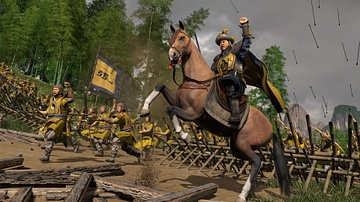Review

| Rating: | |
|---|---|
| Title: | |
| Author: | Anonymous |
| Published: | 1970 |
The Cambridge Illustrated History of China gives a very comprehensive account of the country's development from prehistory to the modern day. The author, Patricia Buckley Ebrey, is one of the foremost scholars of Chinese history but she does not write like a scholar. Her style is very easy and accessible. The book, therefore, provides a reader with a complete understanding of Chinese history in an easy-to-read format. It looks like a textbook and, for all I know, may be used as one but this should not put off anyone thinking of reading it. Textbooks on history are usually pretty dull and dry but Ebrey really brings the topic to life through her choice of detail and the way she writes.
An example of this can be seen when Ebrey discusses a religious cult known as the Queen Mother of the West. Ebrey writes:
During the Han period, the hope for deathlessness or immortality found expression in the cult of a goddess called the Queen Mother of the West. Her paradise was portrayed as a land of marvels where trees of deathlessness grew and rivers of immortality flowed. Mythical birds and beasts were her constant companions, including the three-legged crow, the dancing toad, the nine-tailed fox, and the elixir-producing rabbit. People of all social levels expressed their devotion to her, and shrines were erected under government sponsorship throughout the country. At times, worship of her reached frenzied proportions (71).
I have studied in China and I had never heard of the cult of the Queen Mother of the West. The idea of an elixir-producing rabbit and a dancing toad were pretty intriguing, though, and led me to research the cult further. I found it to be just as Ebrey describes it: as "the first recorded, messianic, millenarian movement in Chinese history" (73). Long before Christianity introduced its concept of the Messiah to China, the cult of the Queen Mother of the West was encouraging a belief in eternal life through salvation by a goddess instead of the son of God. Members of the cult even wore charms on strings around their necks to identify themselves the way Christians do today. I felt as though I knew Chinese history but this cult was completely new to me and is just one example of the many fascinating moments a reader can expect from this book.
The contents run from The Origins of Chinese Civilization in Chapter One all the way to Opening to the World: China Since 1976 in Chapter twelve. In between, a reader will learn about the philosophical foundations, Buddhism, the different dynasties (of course), daily life, rituals and festivals, beliefs in the afterlife and religious cults, and literature and the arts. Although Ebrey does not devote a great deal of time to literature, she covers quite a bit of content in a short space. I was especially impressed that she included the poet Bai Juyi who is often ignored in favor of the better known Li Po (who is also included in the discussion). If you are looking for a comprehensive and accessible work on Chinese history, this is the book for you.
About the Reviewer
Cite This Work
APA Style
Mark, E. (2016, March 26). The Cambridge Illustrated History of China. World History Encyclopedia. Retrieved from https://www.worldhistory.org/review/120/the-cambridge-illustrated-history--of-china/
Chicago Style
Mark, Emily. "The Cambridge Illustrated History of China." World History Encyclopedia. Last modified March 26, 2016. https://www.worldhistory.org/review/120/the-cambridge-illustrated-history--of-china/.
MLA Style
Mark, Emily. "The Cambridge Illustrated History of China." World History Encyclopedia. World History Encyclopedia, 26 Mar 2016, https://www.worldhistory.org/review/120/the-cambridge-illustrated-history--of-china/. Web. 24 Apr 2025.




